Gazette Firsts: The history of The Gazette and royal coronations
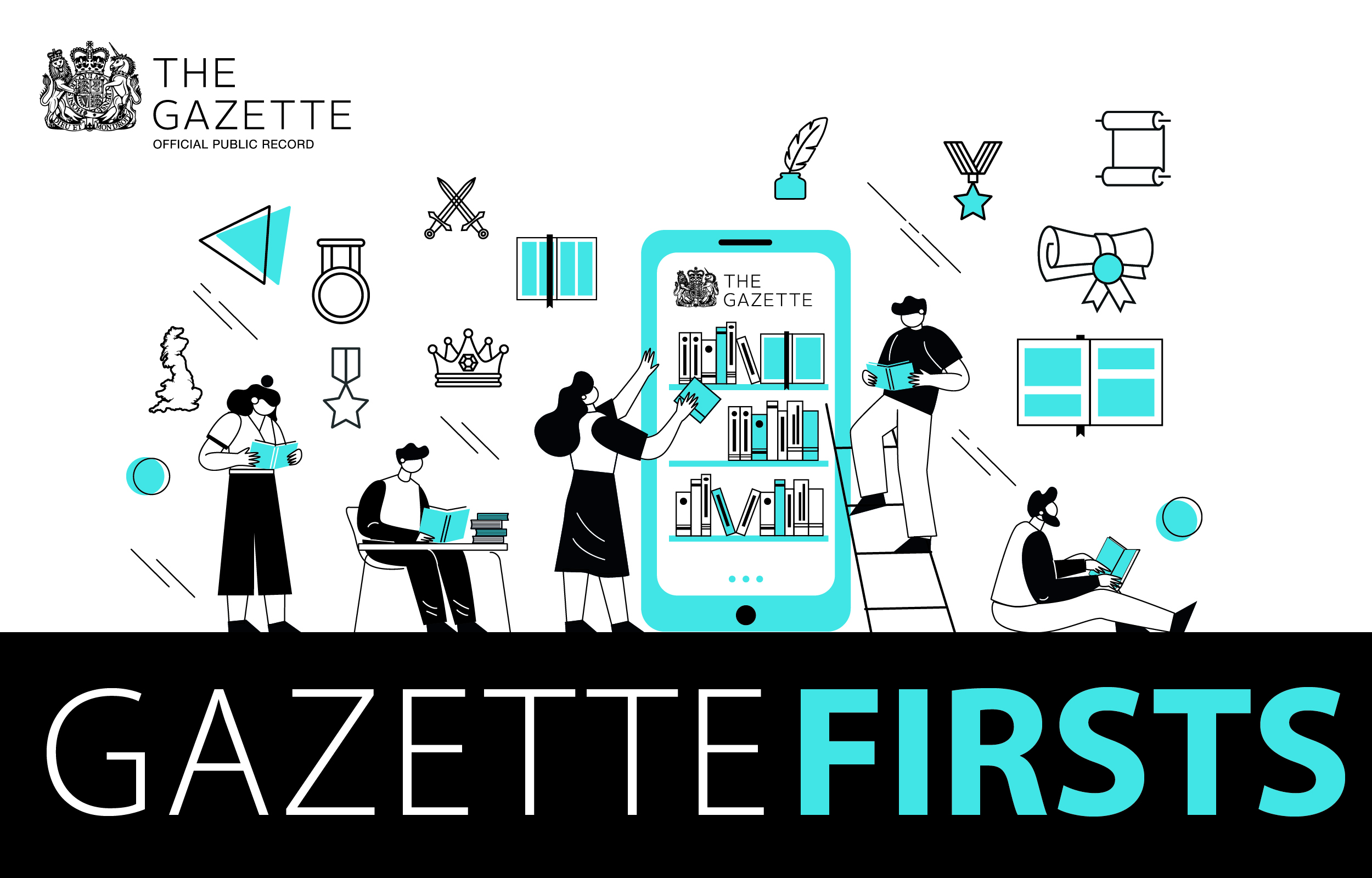
As the official public record since 1665, The Gazette has been recording royal events for over three centuries. As part of our 'Gazette Firsts' series, we look through the archives at royal coronations, as described in The Gazette.
The Gazette and coronations
Throughout its history, The Gazette has played a significant part in keeping the public informed about the monarchy. As such, it has recorded every coronation of a British monarch since its inception in 1665.
The Gazette was first published on 7 November 1665 (Gazette issue 1) after King Charles II relocated his court to Oxford to escape the Great Plague in London. Exiled courtiers were so terrified of the disease that they were unwilling to even touch London newspapers for fear of infection. As a result, Charles II ordered a newspaper to be printed at the University Press in Oxford and The Oxford Gazette (soon to be renamed The London Gazette) was born.
James II
Following the death of Charles II in February 1685, the coronation of his brother James II (of England and Ireland) and VII (of Scotland) was described in an issue of The Gazette (Gazette issue 2028). He was crowned alongside Queen Mary at Westminster Abbey on 23 April 1685: “This Day being the Festival of St. George, the Coronation of their Sacred Majesties King James the Second and Queen Mary, was Performed at Westminster in manner following.”
The Gazette issue goes on to describe the coronation in detail, including the moment of the crowning. After he was “anointed and Invested with all the sacred habits in King Edwards Chair”, which was made in 1300 for Edward I and used at every coronation since, the Crown was “put on just at three of the clock in the afternoon, all the people shouted, the Drums and Trumpets sounded, and the Guns in St. James's Park, and great Guns at the Tower were discharged, and all the Peers put on their Coronets.”
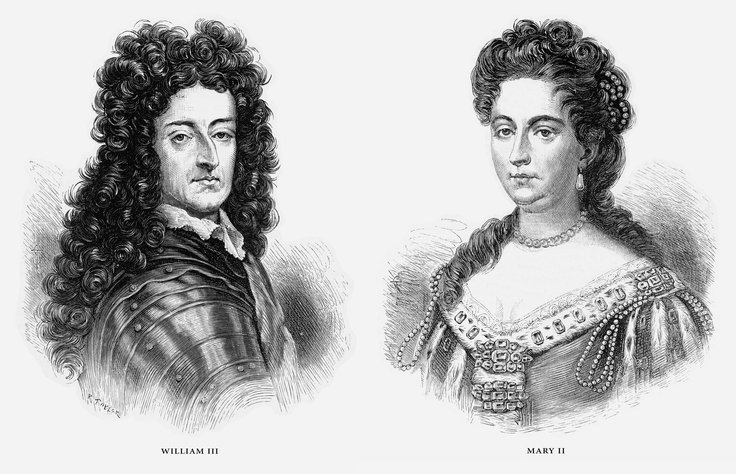
Mary II and William III
Following James II’s deposition in the Glorious Revolution of 1688, Mary II and William III(of England and Ireland) and II (of Scotland) were crowned Queen and King of England, Ireland and Scotland on 11 April 1689 (Gazette issue 2444): “This Day the Coronation of Their Sacred Majesties King Williams and Queen Mary was performed at Westminster in manner following.”
The Gazette describes the King and Queen arriving at Westminster: “Their Majesties being come from Whitehall to Westminster, and the Nobility, etc., being put in Order by the Heralds, they came down in State into Westminster-hall, where the Swords and Spurs were presented to Them”, followed by the crowning: “And at Four of the Clock the Crowns make put upon Their Heads.”
Anne
Upon the death of her sister’s husband, Queen Anne took the throne with her coronation taking place on 23 April 1702. It was similarly described by The Gazette (Gazette issue 3804): “After Sermon, Her Majesty repeated and signed the Declaration or Test established by Act of Parliament, and then took the Coronation Oath, and in King Edward’s Chair, placed in the middle of the Area before the Altar, was anointed, and presented with the Spurs, and gift with the Sword, and vested with Her Purple Robes, and having received the Ring, the Orb and the Scepters, was solemnly Crown’d about Four of the Clock with loud Acclamations, the Drums beating, Trumpets sounding, and the great Guns being discharged”.
On 1 May 1707 the Acts of Union took effect, joining the Kingdom of England and the Kingdom of Scotland into a single, united Great Britain (Gazette issue 4403, Gazette issue 4341 and Gazette issue 4328): ‘We Your Majesty’s dutiful and loyal subjects, being well satisfied of the great Advantages which the Union of The Kingdoms of England and Scotland, lately by Your Majesty’s great Wisdom accomplished, will conduce to the Security of the Protestant Religion, the Establishment and Preservation of the Laws and Liberties of all Your Majesty’s Dominions, and the succession of the Crown in the Protestant Line.’
This resulted in Queen Anne becoming monarch of the Kingdom of Great Britain. Her reign lasted for a total of 12 years and 146 days.
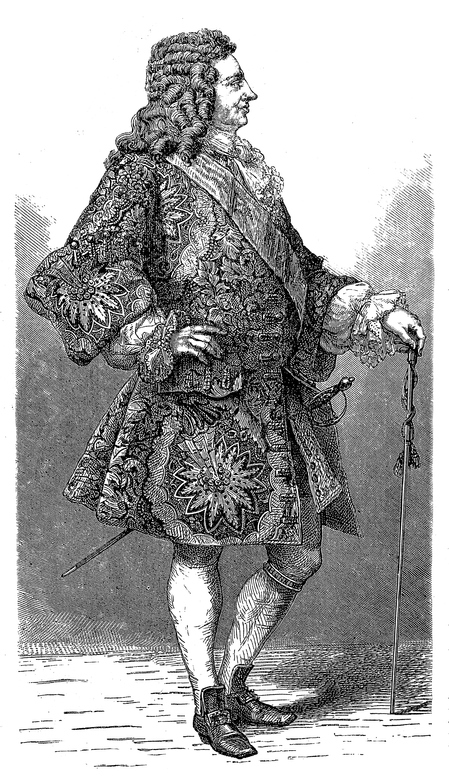
George I
By the terms of the Act of Settlement, Anne (who had no surviving children) was succeeded by her German second cousin, George I, whose coronation took place on 20 October 1714 (Gazette issue 5270). It was met with some controversy. Despite becoming King of Great Britain, George remained as Elector of Hanover in Germany and could not speak much English. The coronation ceremony itself was conducted mostly in Latin as his ministers could not speak German. It was also met with rioting in numerous towns across England.
During his reign, the George I saw off a Jacobite rising in Scotland, however the political powers of the monarchy gradually decreased, with Robert Walpole becoming what is generally regarded to be Britain’s first de facto prime minister.
George II
During a trip to Hanover, George I suffered a stroke and died on 11 June 1727. His son, George II was crowned alongside his wife, Caroline of Ansbach, during a coronation on 11 October 1727 (Gazette issue 6614). According to The Gazette, the Archbishop of Canterbury “put the Crown reverently upon his Majesty's Head, at which Sight all the Spectators repeated their loud Shouts, the Trumpets founded, and upon a Signal given, the great Guns in the Park and in the Tower were shot off.”
George III
George II’s eldest son Frederick, Prince of Wales died suddenly in 1751, nine years before his father. Therefore the King was succeeded by his grandson, George III, whose coronation took place on 22 September 1761 (Gazette issue 10142).
According to The Gazette, the King and Queen Charlotte headed to Westminster Abbey from Westminster Hall “About Eleven o'Clock”, passing “an infinite Number of Spectators”. The procession and ceremony took so long that it was not until “About Half an Hour after One” that “Their Majesties entred the Abbey, and went to their Seats on the East Side of the Throne.” The King was then finally crowned “about Half an Hour after Three o'Clock”.
After the King’s ceremony, Charlotte was crowned Queen Consort: “the Queen removed from Her Seat on the South Side the Area, to a Chair placed before the Altar, and was anointed, (four Ladies holding a Pall over Her Majesty) and afterward invested with the Ring, and crowned by the Archbishop”.
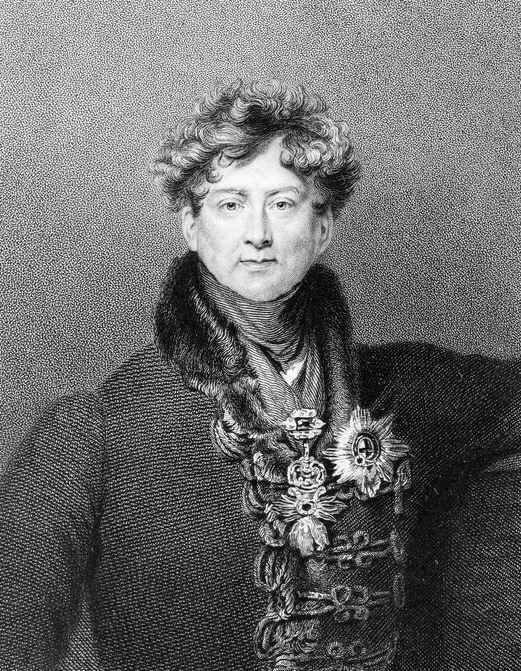
George IV
George IV was crowned as King of the United Kingdom on 19 July 1821 at a coronation at Westminster Abbey following the death of his father, George III, on 29 January 1820.
The coronation had originally been scheduled for August 1820 but was postponed due to George's estranged wife, Caroline of Brunswick, returning from Europe to claim her right as Queen Consort. At the request of the King, the British government attempted to introduce bills in parliament which would have deprived Caroline of her title, rights and privileges. The bill was eventually abandoned due to lack of support, but the coronation was nevertheless rescheduled for 19 July 1821.
According to The Gazette (Gazette issue 17732), George IV was “crowned in the Abbey Church of Saint Peter, Westminster, with the rites and ceremonies accustomed to be observed upon occasions of such great and glorious solemnity.” The issue goes on to describe the procession, ceremony and the evening banquet before stating that the King expressed “the highest approbation of the manner in which the persons, who were attendant on His Majesty, and who assisted at the Ceremony of His Majesty's Coronation, performed their several duties ; and likewise of all the arrangements which, were, made on that solemn Occasion.”
While the coronation ceremony was being conducted, Caroline of Brunswick attempted to enter the Abbey to take her seat next to the King. However, George IV had ordered those guarding the entrances to refuse her entry. Despite several attempts to enter, Caroline finally admitted defeat. She died three weeks later.
William IV
The coronation of King William IV and Queen Adelaide took place on Thursday, 8 September 1831 (Gazette issue 18848). William succeeded his older brother, George IV, a year earlier at the age of 64.
William IV's coronation established much of the format that remains for British coronations today. Previous ceremonies in Westminster Hall had been peerage-only with a procession on foot after across the road to the Abbey. However, the new King travelled in procession by the Gold State Coach from St James’s Palace to Westminster Abbey, a tradition which has been followed by each monarch since. There was also no coronation banquet as William believed it was too expensive.
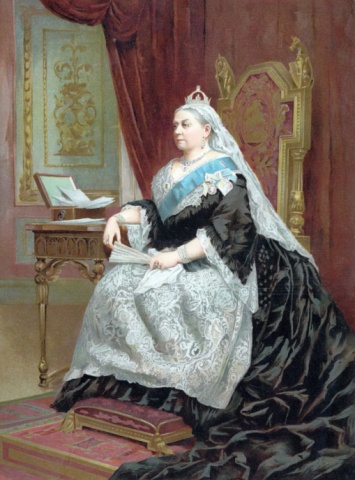
Victoria
Following the death of her uncle William IV, in June 1837 Victoria became Queen at the age of 18 years old. The coronation took place on 28 June 1838 and was described in detail in a special supplement of The Gazette (Gazette issue 19632).
The ceremony was held after a public procession which began at Buckingham Palace and was designed to allow as much of the public as possible to view it. According to The Gazette, the procession “was formed in St. James's-park, at nine o'clock, and moved from the Palace at ten o'clock precisely, up Constitution-hill, along Piccadilly, Saint James's-street, Pall-mall, Cockspur-street, Charing-cross, Whitehall, and Parliament-street, to the West door of Westminster Abbey.”
Following the procession, the coronation ceremony began. The Gazette breaks down the ceremony into the following sections:
- The Recognition
- The First Offering
- The Litany
- The Communion Service
- The Sermon
- The Oath
- The Anointing
- The Spurs
- The Sword
- Offering of the Sword
- The Investing with The Mantle and Delivery of The Orb
- The Ring
- The Sceptres
- The Crowning
- The Holy Bible
- The Benediction and Te Deum
- The Inthronization
- The Homage
- The Holy Sacrament
- Second Offering
The supplement concludes by stating the Queen, who was now “wearing the Crown, bearing the Royal Sceptre and the Orb”, returned to Buckingham Palace “with the same State, and by the same route, as in the proceeding to the Abbey.”
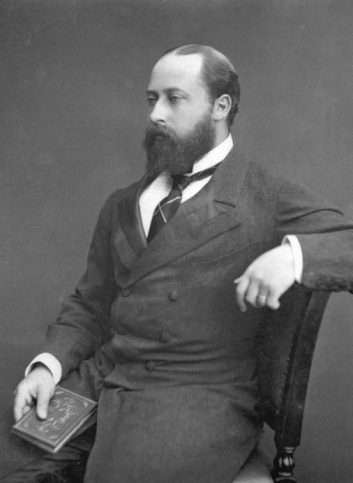
Edward VII
Upon her death, Victoria’s eldest son, Edward VII, became King. Victoria had intended for her son to reign under the name Albert Edward, however he instead chose to reign under the name of Edward VII, stating that he did not want to "undervalue the name of Albert" and his father’s "name should stand alone" (Gazette issue 27270).
The coronation of Edward VII as King of the United Kingdom and the British Dominions, and Alexandra as Queen, took place at Westminster Abbey on 9 August 1902. The ceremony had originally been scheduled for 26 June of the same year but had to be postponed just two days beforehand as the King was taken ill with appendicitis and needed immediate surgery.
A special supplement of The Gazette was published on 28 October 1902 (Gazette issue 27489) and described the coronation in detail, including a moment between The Prince of Wales (later King George V) and his father: “The Prince of Wales then touched the Crown upon His Majesty's Head, and kissed His Majesty's Left Cheek.”
Queen Alexandra was crowned immediately after her husband with a new crown containing the Koh-i-Noor diamond: “The Archbishop of York thereupon took the Crown from the Altar and reverently set it on the Queen's Head, saying: "Receive the Crown"”. To this day, the diamond is still one of the largest in the world and is currently on public display in the Jewel House at the Tower of London.
George V
George V’s coronation took place at Westminster Abbey on 22 June 1911, over a year after his father’s death. A special supplement of The Gazette described the ceremony (Gazette issue 28535), including “The Oath”, “The Anointing” and “The Crowning”, which was conducted by the Archbishop of Canterbury, Randall Thomas Davidson:
“…the Archbishop, having received the Crown from the Dean of Westminster, reverently placed it on His Majesty's Head; when the people with loud and repeated shouts, cried: "God save the King".”
Queen Mary was also anointed and crowned at the coronation by the Archbishop of Canterbury: “The Archbishop thereupon took the Crown from the Altar and reverently set it on the Queen's Head, saying, " Receive the Crown".”
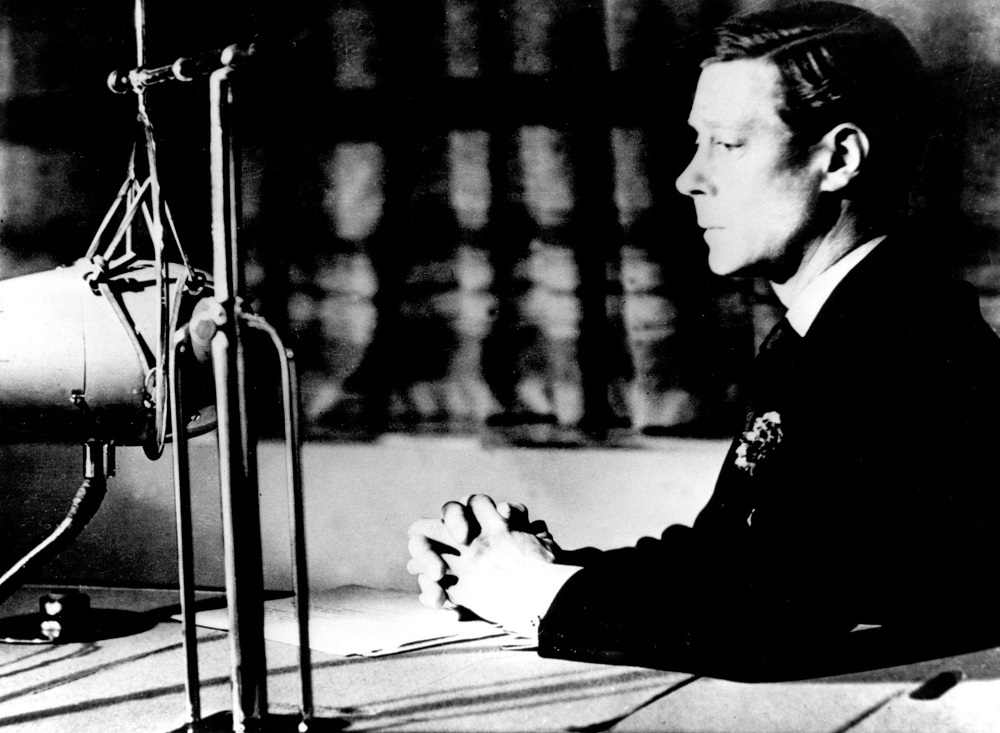
George VI
Following the death of George V, the coronation of Edward VIII was due to take place at Westminster Abbey on 12 May 1937. Preparations had already begun, and souvenirs were on sale when Edward VIII decided to abdicate on 11 December 1936, and his coronation was cancelled.
The Gazette reported the abdication in an Extraordinary Edition with the words: ‘His former Majesty King Edward the Eighth did declare His irrevocable Determination to renounce the Throne for Himself and His Descendants and the said Instrument of Abdication has now taken effect’ (Gazette issue 34349).
Edward VIII younger brother ‘Bertie’, the Duke of York, ascended the throne. The coronation of George VI and his wife Elizabeth took place at Westminster Abbey on the date originally chosen for Edward, on 12 May 1937 (Gazette issue 34453).
The ceremony began with the anointing of the King and was followed by the crowning and the enthronement. The bishops and the peers of the realm then paid homage to the King: “The Archbishop knelt before the King and pronounced the words of Fealty for himself and the other Lords Spiritual, who knelt in their places and said their words of Fealty after him.”
Finally, the anointing, crowning, and enthroning of Queen Elizabeth took place: “Then the Archbishop received from the Keeper of the Jewel House the Queen's Ring, and put the same on the fourth finger of Her Majesty's right hand, saying, " Receive this Ring," &c. The Archbishop then took the Crown from the Altar and reverently set it on the Queen's head, saying, "Receive the Crown of glory"”.
Following the ceremony, the King and Queen entered the Gold State Coach and began the second procession which passed “Broad Sanctuary, West Side of Parliament Square, Bridge Street, Victoria Embankment, Northumberland Avenue, South side of Trafalgar Square, Cockspur Street, Pall Mall, St. James's Street, Piccadilly, Piccadilly Circus, Regent Street, Oxford Circus, Oxford Street, Marble Arch, East carriage road in Hyde Park, Hyde Park Corner, and Constitution Hill, to Buckingham Palace (South centre gate)”, making it the longest coronation procession up to that time.
Elizabeth II
The coronation of Elizabeth II took place on 2 June 1953, over a year after her father died on 6 February 1952. The Queen’s coronation took place at Westminster Abbey with 8,251 guests in attendance. 129 nations and territories were officially represented at the coronation service and it was the first coronation to be televised. It was watched by 27 million people in the United Kingdom (out of the 36 million population) and 11 million people also listened on the radio.
The Order of Processions and the coronation ceremony were published in detail in The Gazette on 17 November 1953 (Gazette issue 40020). Following the procession, where Her Majesty The Queen and The Duke of Edinburgh left Buckingham Palace at exactly “10.26 a.m.” in the Gold State Coach pulled by “eight grey horses”, the coronation service was conducted in six parts:
- the recognition
- the oath
- the anointing
- the investiture (which included the crowning)
- the enthronement
- the homage
The Saint Edward's Crown, made in 1661, was placed on the head of Elizabeth II: “The Archbishop, now being at the Altar, took Saint Edward's Crown into his hands, and setting it before him again upon the Altar said the prayer of Benediction, beginning with the words ‘O God the Crown of the faithful’.”
Elizabeth II, wearing the Imperial Crown and holding the Sceptre with the Cross and the Orb, left Westminster Abbey “through the Choir and the Nave to the West Door of the Church […] whilst all assembled sang the National Anthem.”
Following the procession back to Buckingham Palace, The Queen appeared with her family on the balcony to greet the cheering crowds, still wearing the Imperial State Crown and the Royal Robes. She would appear once more on the balcony at 9.45pm to turn on the 'lights of London', which cascaded down the Mall until all the floodlights from the National Gallery to the Tower of London had been lit.
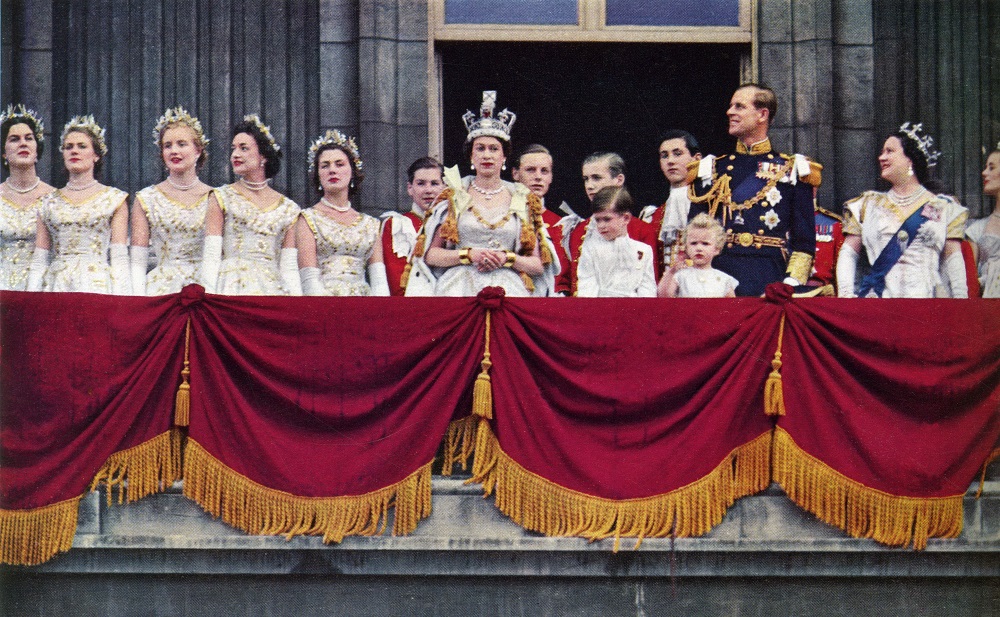
See also
This month in history: The coronation of Queen Elizabeth II
Gazette Firsts: The history of The Gazette and deceased estates notices
Gazette Firsts: The history of The Gazette and insolvency notices
The Gazette and its role during events of national significance
Images
Getty Images
Getty Images
Getty Images
Getty Images
Getty Images
Keystone Press / Alamy Stock Photo
© Illustrated London News Ltd/Mary Evans
Publication date: 16 August 2021
Any opinion expressed in this article is that of the author and the author alone, and does not necessarily represent that of The Gazette.
